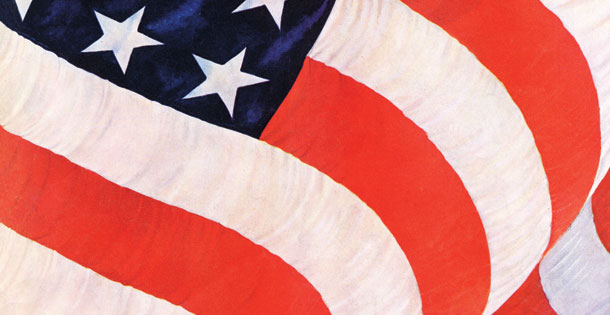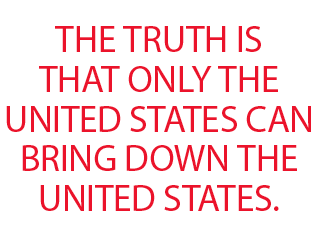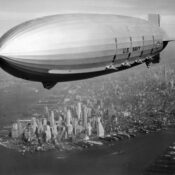This was in the midst of another economic downturn, with a worst-quarter drop of 5 percent in the fall. But the United States did not ride off into the sunset, and the Soviets never managed to take that “shortcut to world domination.”
A mere 30 years later, the USSR was no more, having met a fate worse than what history had supposedly reserved for the United States. It did not just decline; it literally disappeared on Christmas Day 1991, leaving behind the Russian Federation and 14 orphan republics. Yet Kennedy’s agitation made the fictitious missile gap real enough to serve its domestic purpose. He won the White House two years later.
Eleven years later, the drama of decline was reenacted once again, this time by Kennedy’s Republican disciple Richard M. Nixon.
America was sinking slowly, while others were rising; its influence was on the wane. This would become the leitmotif of the Nixon administration, and it foreshadowed the “rise of the rest” that suffuses the present-day celebration of China, India, et al. Its fullest expression was a rambling speech by the president in Kansas City in 1971.
America is no longer the economic “No. 1,” Nixon decreed. There are in fact “five great power centers in the world today.” These are the United States, followed by Western Europe, a “resurgent Japan,” the Soviet Union, and “Mainland China,” which “inevitably” is growing into “an enormous economic power” and eventually a global strategic player. “So, in sum, what do we see…as we look ahead five years, 10 years, perhaps it is 15? We see five great economic super powers.”
The diagnosis didn’t quite pan out. Fifteen years later, in 1986, Japan was about to peak. After three decades of “The Russians Are Coming,” the Soviet Union was faltering, and it would go on to lose the Cold War in 1989, when the “velvet revolutions” swept away Moscow’s decayed empire in Eastern Europe. So who would push aside the United States now? Enter Japan in the lead and Europe in a supporting role.
The choice narrative unfolded like this: Japan’s bureaucracy planned with meticulous foresight. These wise samurai knew everything, and what they did not know, they studied obsessively to unearth. Government and business worked hand in glove for the greater glory of the nation. Japanese firms could draw on limitless capital, and because the funds were provided by bank loans, not by equity, corporations did not have to please shortsighted stockholders.
The educational system was celebrated as the Soviet one had been in the Sputnik days, and as China’s is today: no nonsense, hard work, ruthless competition to promote the best and the brightest. Even better, Japan shared none of America’s pathologies. Its crime rate was minuscule; its cities were clean and safe. Harvard sociologist Ezra Vogel’s Japan as No. 1, noted an admiring reviewer, was a monument to “Japan’s steamroller eminence.”
In fact, it was downhill for the steamroller. In 1992, growth nosedived below 1 percent. The “Lost Decade,” with two dips below zero, was in full swing.
In the United States, 1992 marked the birth of the longest expansion since the mid-19th century, when reliable statistics became available–a 15-year boom. But the Declinists as usual refused to notice. Just five years before, the Johns Hopkins academic David Calleo had called the United States a “hegemon in decay.” It was “set on a course that points to an ignominious end,” he predicted.
Now, at the threshold of America’s fabulous long run, the scholar devoted an entire chapter of The Bankrupting of America to “Decline Revisited.” Why another round of gloom? His answer was “de-industrialization.” It occupies a place of honor in the Hall of Declinism, next to the theories of many other authors who argued that “making stuff” beats inventing and designing, moving and marketing, trading and banking. “Most of the new service jobs” were not in high-tech or high value-added, Calleo claimed, but “in fast-food chains, discount retail stores … and similar low-wage sectors.”
In short, America’s best days were over–again. It was evolving into a land of hamburger flippers, pizza boys, and big-box retail clerks. In fact the opposite was true; the majority of new jobs were adding value above average. The simplest and best measure of value creation is “real GDP per worker.” In the past 50 years, the United States has consistently outranked its nearest competitors, including Japan and Germany, by impressive margins.
At the end of the naughts, decline was back with a vengeance. Yale historian Paul Kennedy remade his 1987 The Rise and Fall of Great Powers, this time because of the global financial crisis triggered by the fall of the house of Lehman on September 15, 2008. While Russia, China, et al. might be suffering “setbacks,” the “biggest loser is understood to be Uncle Sam.”
Chronic fiscal deficits and military overstretch–the twin scourges of his 1987 book–were finally doing in the United States, and the “global tectonic power shift, toward Asia and away from the West, seems hard to reverse.” This shift was one reason for America’s slide; the other was “American political incompetence.” There was but one consolation: great powers “take an awful long time to collapse.” The nice thing about prophecy is that doom never comes with a date.
Become a Saturday Evening Post member and enjoy unlimited access. Subscribe now





